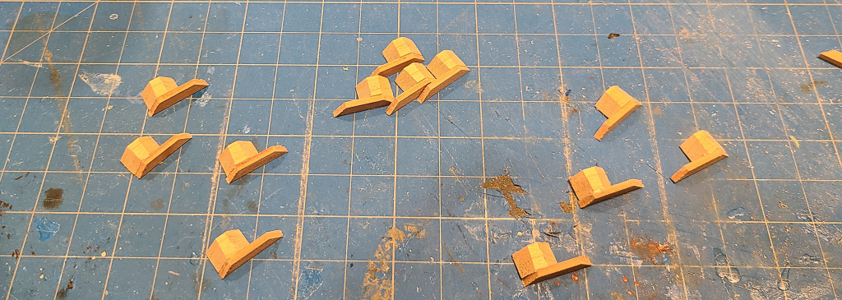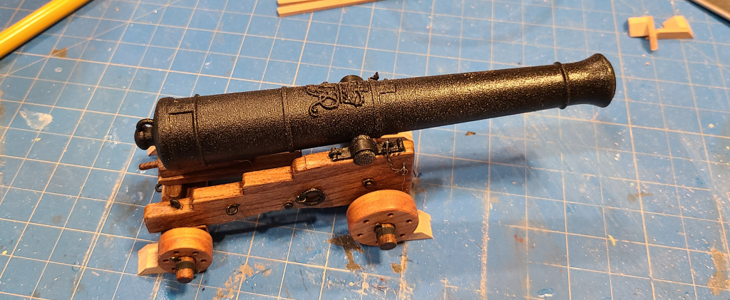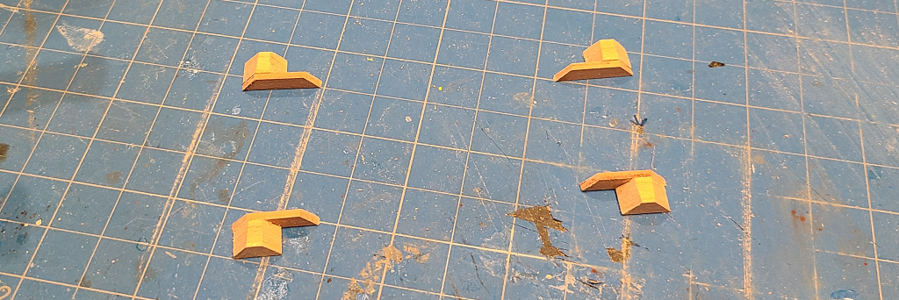Kurt Konrath
Kurt Konrath
Try sanding or scraping the board to get level with wood, and as for color, is it new or weathered deck, the color changes from age, weather and scrubbing the decks.
I haven't used it for a long time, but I think it is really, really thin. Standard 20# printer paper is less than 0.004" thick, and I think carbon paper is about the same. Construction paper would work well, but is normally about 0.010" thick, although there is supposed to be some thicker.Ciap Sigillo, why don't you try carbon paper?

I haven't used it for a long time, but I think it is really, really thin. Standard 20# printer paper is less than 0.004" thick, and I think carbon paper is about the same. Construction paper would work well, but is normally about 0.010" thick, although there is supposed to be some thicker.
Could you chamfer slightly the top edges of the decking to creat a useable groove for your caulking?Thanks for your thoughts. I am using thicker than normal planking, because it's what I have, and it is creating a base, not a part of a ship. So my planks are 0.2" or about 5mm thick. So the thread wouldn't fall through the "deck" to the area below (between cross beams), it would just fall below the surface, and look incorrect, and might be difficult to lift back up.
I could, but depending on how I created the caulking, I'm afraid the caulking would vary in width. Sanding a small chamfer, for example, would vary slightly (at least with my sanding). If it were fill completely flush, the caulk like would vary some in width. If I used thread, it might be difficult to keep straight and level, depending on the chamfer. Although it would certainly not fall down. I actually think I'm better off leaving the planks without rounding, as whatever is spaced between will look more precise.Could you chamfer slightly the top edges of the decking to creat a useable groove for your caulking?
I understand. I think it could be done if you had a jig and a small block plane, but you need to stay with whatever you are comfortable with. Practice on scrap for sure.I could, but depending on how I created the caulking, I'm afraid the caulking would vary in width. Sanding a small chamfer, for example, would vary slightly (at least with my sanding). If it were fill completely flush, the caulk like would vary some in width. If I used thread, it might be difficult to keep straight and level, depending on the chamfer. Although it would certainly not fall down. I actually think I'm better off leaving the planks without rounding, as whatever is spaced between will look more precise.
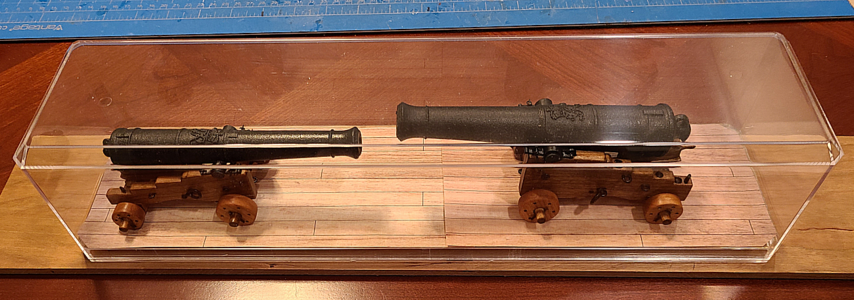
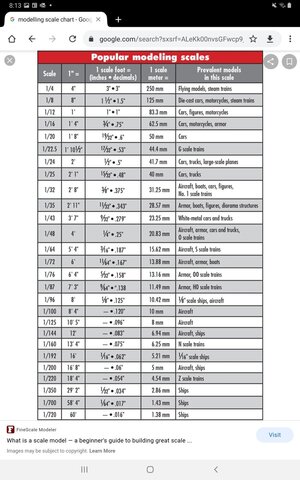
Right. That's why I've been converting my material thicknesses to inches. Like the 0.025" thick cardboard I have would represent got 1:20 scale would represent 1/2" wide caulk in real size. That seems like a reasonable value to me.Some cosiderations with regards to your caulking endeavors. How wide, in real life, is the bead of caulk? Thinking of keeping to scale could be problematic, even at 1:22 scale. At this scale, one scale foot is about 1/2". Supposing the caulk width is about 1/2" itself, the scale caulk width might be about .02" on The model....I am attaching a chart for your perusal....


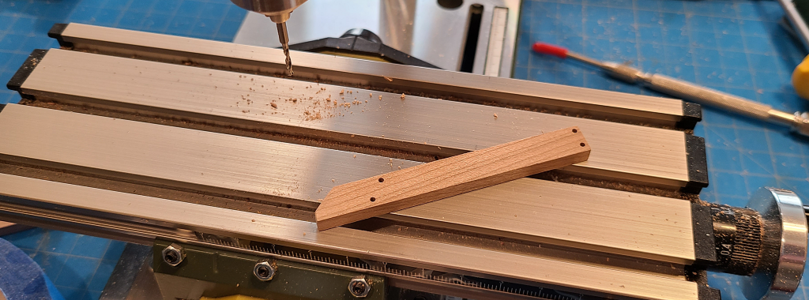
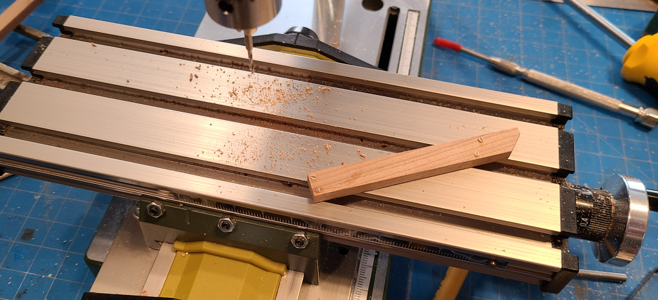
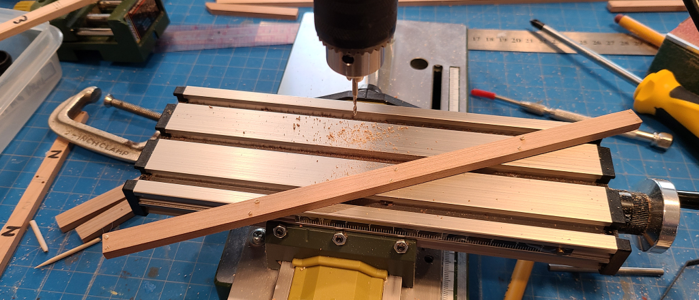




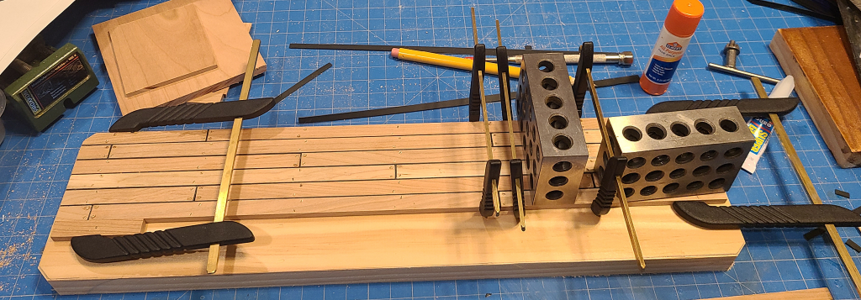
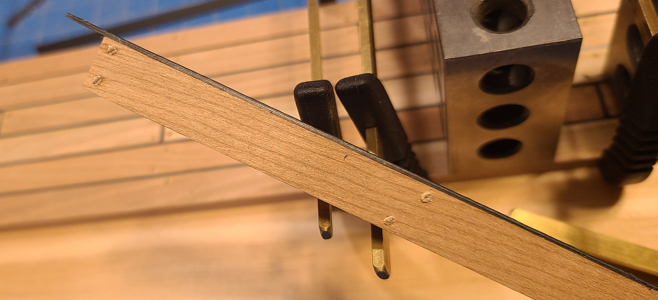
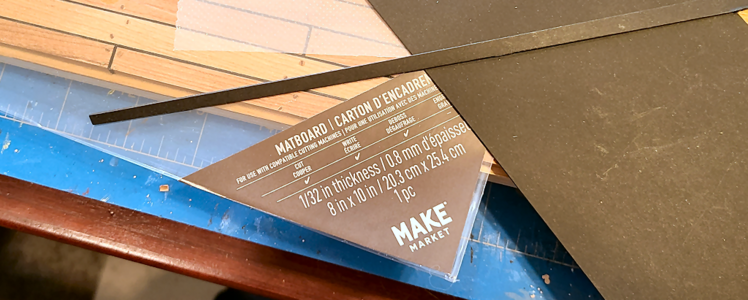


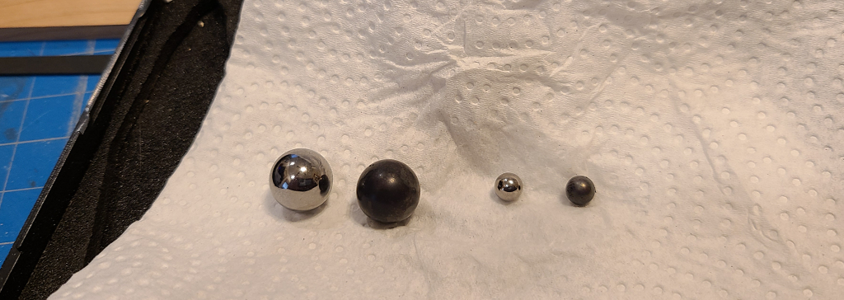
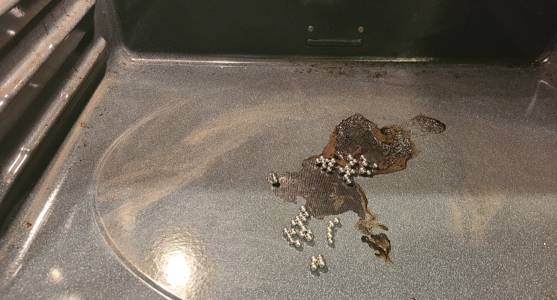
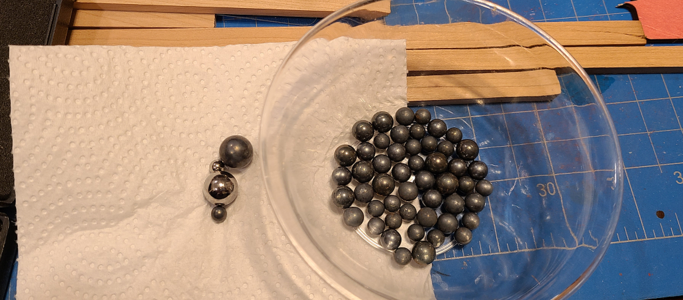
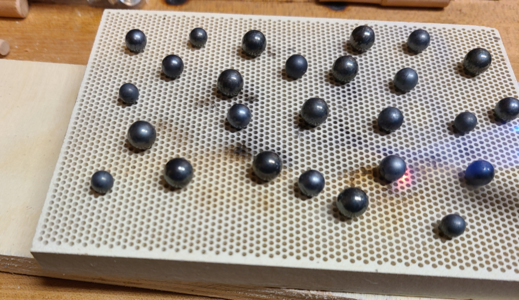



I would use wedges to place that doesn't go back and forth,my opinion, (it counts for little), too shiny it loses its characteristics a lot but, you like it, that's fine, FrankI turned the base upside down, and using my circular saw and fence, made consistent cuts around all sides, cutting only the 5mm thick planks, until I had a perfect fit on the inside of the plexi case:
View attachment 349471
I've sanded the planking with sandpaper just to 220 grit; I don't want the deck TOO smooth or glossy, so figured this would be a good compromise. I can now begin finishing the deck with MinWax Wipe-On Poly.
But first, I need to decide how I'm going to attach the guns to the decking, if at all. As a reminder, the positioning of the guns will be like this:
View attachment 349472
I've shown the cannonball pyramids in their approximate location. They will have wood retainers around them, and will be all glued directly to the planking.
My question is how to attach the guns to the deck. I have a number of choices:
If anyone has any other suggestions for this display, I'd love to hear them as well. Come on, guys! Likes are great, but I'd love to hear some comments and suggestions here!
- Don't attach them at all. But moving the display without great care may result in gun damage.
- Place chocks at the trucks (wheels). This is done oftentimes in display, and would /help/ the guns to stay in place, but not insure they would.
- Use a spot of Blu Tack on the bottom of the wheels. This would prevent them from rolling away and give some stability. Also a false sense of security, for someone other than me thinking they're firmly attached. Also, the Blu Tack may show.
- Glue the trucks to the base. This would be pretty secure, but not ultimately, and there's a chance of glue showing up or marking the planking.
- Use screws through the bottom of the base into the trucks. This would be most secure, and removable, but would make for permanent holes in the bottom of the trucks. Exact location would be problematic, but using clear materials marked from the bottom, then transferred to the base, should work.
- Use screws from the bottom through the base into the truck axtrees. This would be secure, and would leave the trucks unmarked, be a bit easier to locate, but at certain angles the screws would be visible.
- Unknown - your suggestions. Hopefully some of you have better ideas based on your experience in doing similar mountings.
So, like chocks or wedges at each truck? And your opinion counts for a lot.I would use wedges to place that doesn't go back and forth,my opinion, (it counts for little),
Assuming you're referring the the planking, I definitely agree, I don't want it too glossy at all, just a nice matte or satin finish.too shiny it loses its characteristics a lot but, you like it, that's fine, Frank

1) a wedge for each cart, 2) yes, the planking treated only with oil and smoothed with metal wool, FrankSo, like chocks or wedges at each truck? And your opinion counts for a lot.
Assuming you're referring the the planking, I definitely agree, I don't want it too glossy at all, just a nice matte or satin finish.
Thanks for responding.
You were too fast.Another possible mounting method:
8. Small diameter pins connecting the trucks and planks, drilled into each, could be mounted in the planks with only small holes drilled in the trucks. Even as small as pins. Probably hold well as long as not turned at too great an angle. Might not be obvious how it's held though, and damaged with excessive movement.

You too? I get that all the time from my wife.You were too fast.
Thanks, Tobias. I do have the truck retaining pins on the carriages, of course. And yeah, separate pins from below into the trucks might work well.Hello Signet, about the fixing. I have seen colleagues drill small holes in the wheels and put a wire pin in the back, then transfer the whole thing to the deck and then also drill small holes to fix the whole thing.
View attachment 349484

